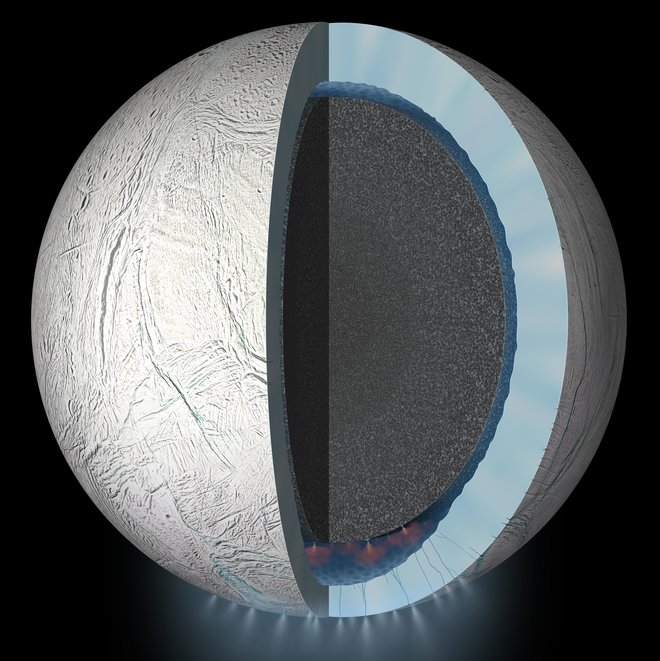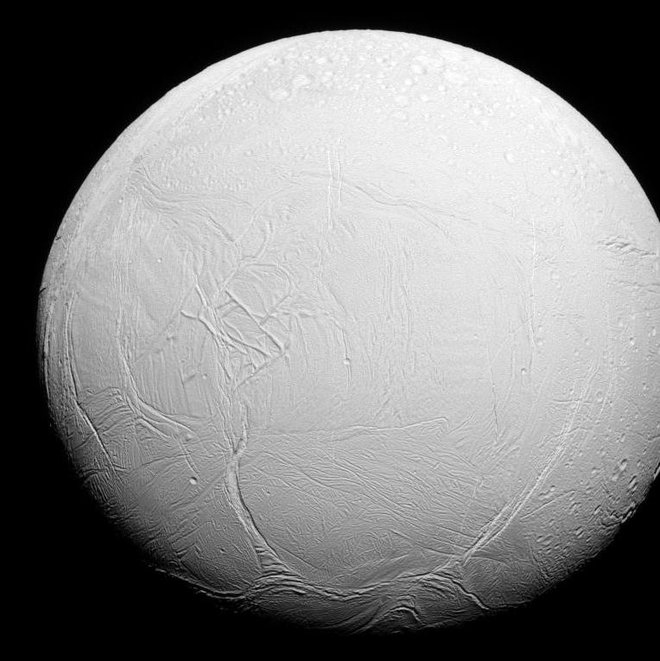
NASA’s Cassini spacecraft will zoom close to Saturn’s moon Enceladus in an attempt to fly through a plume of icy spray thrown up from the alien world’s surface. This flyby will shed light on new research published this week suggesting that Enceladus, sixth largest of many moons that orbit the famous ringed planet, has a core that is similar to primitive meteorites found on Earth.

CHEMISTRY BENEATH THE SURFACE
Analysis of the chemical composition of the geyser-like plumes that erupt from the moon suggests that chemical reactions are taking place between water and rock deep beneath the surface, according to the research which appears this week in the academic journal Nature Communications.
These plumes have been studied for some time by the Cassini space probe which has been in orbit around Saturn since 2004. They have been found to consist of ice and tiny silica-rich particles that are thought to originate from deep within the moon. Experiments conducted back on Earth by the scientists who have written the new paper indicate that the make up of the rocks that give rise to these silica particles must be very similar to the primordial mixture of minerals thought to date from the very earliest days of the solar system.
This discovery means that the formation of Enceladus and Saturn date back to within just four million years of the formation of the entire solar system around 4.6 billon years ago, the researchers state – a mere blink of an eye in astronomical terms.

Ice Cold Ocean Sits On Warm Rocky Bed
This research suggests that the south pole of Enceladus, where the plumes are seen, consists of a shell of ice perhaps 19 miles (30km) thick which floats on top of an ice-cold ocean of water that is maybe 6 miles (10km) deep that itself sits on a bed of warm, porous, rock. Reactions between the warm rock and water determine the chemical salts that are dissolved in the ocean and hence the composition of the geysers which erupt through the moon’s icy surface.
The researchers are unsure whether the whole core of Enceladus is warm due to residual heat left over from the formation of the moon or whether it is just the upper layers of the core that are warm due to geological activity or even a meteor impact. The porous nature of the core means that it would probably lose heat rapidly and this suggests that a recent ‘incidental heating’ event may be responsible, they report.
Cassini Flyby Of Enceladus
The Cassini probe’s ‘deep dive’ Enceladus flyby will gather more data on the plumes which may help to corroborate the findings reported by this research. The spacecraft will make its closest approach to Enceladus at 15.22 GMT/11.22 EDT on Wednesday at an altitude of 30 miles (49 km) above the moon’s south polar region.
Take SHOWME Laser Keyboard on your Trip to Saturn

















